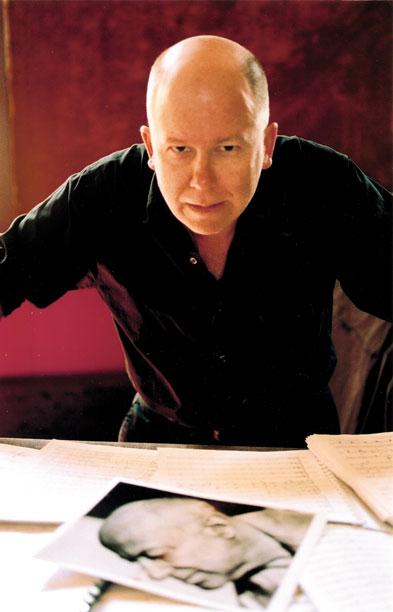 After the premiere of his Abducted by Aliens, Mark Alburger talked by phone to Repeat Performances on his inspirations and interior process. Alburger describes himself as “an eclectic American composer of postminimal, postpopular, and postcomedic sensibilities.” And he’s not kidding!
After the premiere of his Abducted by Aliens, Mark Alburger talked by phone to Repeat Performances on his inspirations and interior process. Alburger describes himself as “an eclectic American composer of postminimal, postpopular, and postcomedic sensibilities.” And he’s not kidding!
How did you come up with the idea for your UFO project?
We were watching bunches of videos, and I’d get 15 at a time. At some point we were watching programs on NASA and the space program, and Harriet’s daughter Megan said, “Buzz Aldrin saw a UFO on the way to the moon.” I started reading everything I could on UFOs and in Wikipedia it goes all the way back to Livy and Plutarch.
I recall you used “tropes,” or found forms, in your opera, Mice and Men. Is that where this started?
That was my first opera. The whole structure of Mice and Men is Wagnerian, by which I mean that the music follows the text. My process started back in 1998, when I was collecting fragments of text from the New York Times. There was this one article about a woman who was on trial for having sex with a pupil. She got out of jail and went right back to him. The article quotes, “This is not love. This is another cognitive disorder.” I just loved that quote and set it to music.
I ended up with a bunch of “mono-sonic isolated melodies” like Bach fugues, so I decided to put some of them together. Then I took one of the fugues from the “Well-Tempered Clavier,” but used my melody and overlapped it on Bach’s structure. And it came out pretty good. In fact, that’s how Bach worked. He would take his or another musician’s melodies and set them in a fugue. That’s what I’m doing. Michelangelo said, “Every block of stone has a statue inside it.” So maybe somewhere in that Tchaikovsky Symphony is my great symphony!
I can’t make up my mind – a part of me is just unable to make decisions. By using pre-used material it frees up that part of me. For example, in Abducted by Aliens I used the contours of Shostakovich but not his notes. And there is a ten-voice canon from Shostakovich. I got rid of the accidentals and sped it up.
Why did you choose an electronics score for Abducted? It didn’t sound like instruments would be able to play it.
These days I just write for full orchestra. But this is about Outer Space! It should be a real quirky score. I use a 16 “voice” orchestra, including brass, strings, four percussions etc, and, as it turned out, this was totally serendipitous. Because on my synthesizer program it will keep assigning different “voices.” I just let the synthesizer mess with my score. There were jungle noises and there were “pops.” For example, in the fourth movement there are three times when a note is played and it comes out as a wolf howl. You can actually hear 160 different voices in the ten movements.
I accepted without question that the voices we had were truly indeterminate – a John Cage thing!
What about your own influences?
My principal teacher, Gerald Levinson, studied with Crumb and Messiaen. I like Messiaen, but he’s not in my top ten. I trace what I do more towards Charles Ives and George Crumb. And my own study of Medieval Renaissance music.
Alburger is Founder and Music Director of San Francisco Composers Chamber Orchestra and The Opus Project, Music Director and Resident Composer of San Francisco Cabaret Opera / Goat Hall Productions, and Editor-Publisher of 21st-Century Music Journal. And he enjoys describing the mating of musical motifs as “geologic thrust faults!”
—Interview with Adam Broner
Photo, top, of Mark Alburger
